

 * Image source: same as the link
* Image source: same as the linkGlobal Research
Revolution: Is 1848 Repeating Itself in the Arab World?
PART I: The Dynamics of Global Capitalism
by Mahdi Darius Nazemroaya
February 5, 2011
Is history repeating itself? Have the events of 1848 in Europe repeated themselves in the Arab World? Will 2011 see the same outcomes as 1848? Only the Arab people can decide. Their fate is in their hands, but they should learn from the mistakes of 1848 and seriously address the role of the capitalist class.
PART I
The European Spring of 1848 and the Arab Spring of 2011
In 1848, revolutionary fervour broke across continental Europe. The waves of revolution were set in motion in France. It did not take long before the rest of Europe was hit with a tsunami of popular uprisings and revolts. Like a domino effect, country after country would be hit by revolt. Denmark, the German States, the Italian States, Belgium, Wallachia, and the Habsburg's Austrian Empire would all be shaken by popular revolt. The bases of the European revolts were the same as those in the modern-day Arab World.
Economic disparity, abuse of workers rights, and a lack of political equality were all causes for the wave of revolutions in 1848 Europe. Industrialization and economic and technological leaps were causing major socio-economic changes in European societies before and up to 1848. While in a very different historical context, this has also been occurring in today's Arab World.
In 19th Century Europe, fundamental economic changes, characterized by the consolidation of wealth, caused massive unemployment as well as the outbreak of famines.
This has also occurred in recent years in the Arab World, largely as a result of the brunt of neo-liberal reforms and rising food prices. Anger over lack of employment, lack of opportunities, corrupt government practices, and rising bread and food prices have actually been igniting riots and protests in the Arab World, specifically those states around the Mediterranean Sea, for several years before 2011. These past riots and protests were preludes to the highly tense situations in Egypt, Tunisia, and the Arab World.
The French Revolution of 1848: Europe's Tunisia or Iran?
1848 France was ruled by the landed property class, big industry, and the banking class. It was the working class that brought about the rise of this triad (landed property, big industry, and the banking class) through the French Revolution of 1789. In turn, this triad or "big capital" would systematically disenfranchize the working class by eliminating universal suffrage.
A new residency criterion was imposed in France by King Louis-Philip I who served the interests of big capital and was appropriately called the "Bourgeoisie King." French citizens had to prove that they lived in a riding for three years. To prove residency, the French working class needed letters of authentication from their employers. Thus, the working class and an overwhelming majority of the French were disenfranchized from voting and held hostage by big capital. French workers would also migrate from one place and riding to another place and riding for employment, because of the changing economic conditions, which would also make qualification for voting impossible. Unemployment would grip France and there would be a massive surplus of labour that would be readily exploited by organized capital. These unbearable conditions would led to the French Revolution of 1848.
In the French Revolution of 1789, the working class allied itself with big capital (big industry, the banking class, and landed property), but this would change in 1848. While big capital was fighting amongst itself, the working class was becoming an ally of the petty bourgeoisie in demanding a share in governing France and directing the course of French society. The House of Orléans was overthrown and the monarchy brought to a final end with the establishment of the Second French Republic.
Yet, the working class did not secure their rights after 1848. They held briefly the seat of power. The new taxation system failed and the capitalist class retained its control, thereby neutralizing efforts for genuine socio-economic reform in France. This led up to the 1851 Paris coup that was to make Charles Louis-Napoléon Bonaparte the emperor of the Second French Empire. The other outcome, after the defeat of Emperor Bonaparte in the Franco-Prussian War, was the 1871 establishment of the short-lived French government known by historians as the "Paris Commune." [1] Under the Paris Commune and its mixed socialist and anarchist government, France became history's first socialist republic, more than seventy years before the establishment of the Soviet Union. Under the Prussian occupation of France, the Paris Commune was ultimately crushed by an agreement and strategic understanding reached between the Germans and French organized capital.
What lessons can be learned from 1848?
The French Revolution of 1848 illustrates how capital can manipulate the desires of the working class and mainstream society. It also illustrates that the capitalist class was predominately in control of the state, despite the changes in political leadership. Finally, the outcome of 1848 in France illustrates that policies are deliberately fluctuated by organized capital as a means to lull mainstream society. In this context, history could repeat itself in the Arab World.
READ MORE
Revolution: Is 1848 Repeating Itself in the Arab World?
PART I: The Dynamics of Global Capitalism
by Mahdi Darius Nazemroaya
February 5, 2011
Is history repeating itself? Have the events of 1848 in Europe repeated themselves in the Arab World? Will 2011 see the same outcomes as 1848? Only the Arab people can decide. Their fate is in their hands, but they should learn from the mistakes of 1848 and seriously address the role of the capitalist class.
PART I
The European Spring of 1848 and the Arab Spring of 2011
In 1848, revolutionary fervour broke across continental Europe. The waves of revolution were set in motion in France. It did not take long before the rest of Europe was hit with a tsunami of popular uprisings and revolts. Like a domino effect, country after country would be hit by revolt. Denmark, the German States, the Italian States, Belgium, Wallachia, and the Habsburg's Austrian Empire would all be shaken by popular revolt. The bases of the European revolts were the same as those in the modern-day Arab World.
Economic disparity, abuse of workers rights, and a lack of political equality were all causes for the wave of revolutions in 1848 Europe. Industrialization and economic and technological leaps were causing major socio-economic changes in European societies before and up to 1848. While in a very different historical context, this has also been occurring in today's Arab World.
In 19th Century Europe, fundamental economic changes, characterized by the consolidation of wealth, caused massive unemployment as well as the outbreak of famines.
This has also occurred in recent years in the Arab World, largely as a result of the brunt of neo-liberal reforms and rising food prices. Anger over lack of employment, lack of opportunities, corrupt government practices, and rising bread and food prices have actually been igniting riots and protests in the Arab World, specifically those states around the Mediterranean Sea, for several years before 2011. These past riots and protests were preludes to the highly tense situations in Egypt, Tunisia, and the Arab World.
The French Revolution of 1848: Europe's Tunisia or Iran?
1848 France was ruled by the landed property class, big industry, and the banking class. It was the working class that brought about the rise of this triad (landed property, big industry, and the banking class) through the French Revolution of 1789. In turn, this triad or "big capital" would systematically disenfranchize the working class by eliminating universal suffrage.
A new residency criterion was imposed in France by King Louis-Philip I who served the interests of big capital and was appropriately called the "Bourgeoisie King." French citizens had to prove that they lived in a riding for three years. To prove residency, the French working class needed letters of authentication from their employers. Thus, the working class and an overwhelming majority of the French were disenfranchized from voting and held hostage by big capital. French workers would also migrate from one place and riding to another place and riding for employment, because of the changing economic conditions, which would also make qualification for voting impossible. Unemployment would grip France and there would be a massive surplus of labour that would be readily exploited by organized capital. These unbearable conditions would led to the French Revolution of 1848.
In the French Revolution of 1789, the working class allied itself with big capital (big industry, the banking class, and landed property), but this would change in 1848. While big capital was fighting amongst itself, the working class was becoming an ally of the petty bourgeoisie in demanding a share in governing France and directing the course of French society. The House of Orléans was overthrown and the monarchy brought to a final end with the establishment of the Second French Republic.
Yet, the working class did not secure their rights after 1848. They held briefly the seat of power. The new taxation system failed and the capitalist class retained its control, thereby neutralizing efforts for genuine socio-economic reform in France. This led up to the 1851 Paris coup that was to make Charles Louis-Napoléon Bonaparte the emperor of the Second French Empire. The other outcome, after the defeat of Emperor Bonaparte in the Franco-Prussian War, was the 1871 establishment of the short-lived French government known by historians as the "Paris Commune." [1] Under the Paris Commune and its mixed socialist and anarchist government, France became history's first socialist republic, more than seventy years before the establishment of the Soviet Union. Under the Prussian occupation of France, the Paris Commune was ultimately crushed by an agreement and strategic understanding reached between the Germans and French organized capital.
What lessons can be learned from 1848?
The French Revolution of 1848 illustrates how capital can manipulate the desires of the working class and mainstream society. It also illustrates that the capitalist class was predominately in control of the state, despite the changes in political leadership. Finally, the outcome of 1848 in France illustrates that policies are deliberately fluctuated by organized capital as a means to lull mainstream society. In this context, history could repeat itself in the Arab World.
READ MORE

![[URGENT PLEA: In Update] EMERGENCY in GANGJEONG Since AUG. 24, 2011](http://2.bp.blogspot.com/-3iz8k-USXVY/TlmRYhhIYtI/AAAAAAAAL2c/9dbF85ZIkIs/s227/jejusit.jpg)

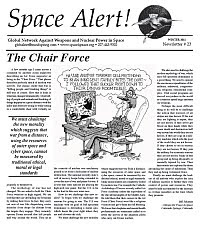

![[Solidarity from Japan for the Jeju] 253 individuals and 16 groups/organizations](http://2.bp.blogspot.com/_gnM5QlRx-4c/TR_YeNVE1yI/AAAAAAAAHWQ/ARyf6oQN0S0/S227/jeju_12_10j.jpg)
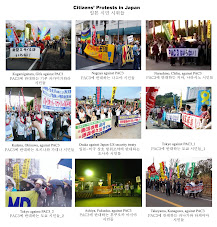
![[Translation] Korean organizations' statement: Immediately cancel the joint ROK-US drill Nov 26](http://2.bp.blogspot.com/_gnM5QlRx-4c/TPOE8VKXHFI/AAAAAAAAGlM/8lryt-8sFjc/S227/1.jpg)
![HOT! [Hankyoreh Hani TV] Beneath the Surface: the investigation into the sinking of the Cheonan](http://4.bp.blogspot.com/_gnM5QlRx-4c/TOI83qht8aI/AAAAAAAAGXU/22SW6Q5ntV8/S227/HaniTV%2BCheonan.gif)

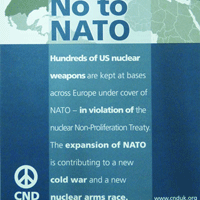

![[Translation]Statement against illegal inspection and unjust lay-off by the Kunsan USAFK!(Nov_2010)](http://4.bp.blogspot.com/_gnM5QlRx-4c/TOPLsVkZMqI/AAAAAAAAGZs/3YnnckIyAaY/S227/gunsan%2Bprotest.gif)
![[Translation] Korean organizations' statement against dispatching special force to the UAE on Nov.](http://4.bp.blogspot.com/_gnM5QlRx-4c/TOP95zHXlCI/AAAAAAAAGak/E0Ug1XtUFfM/S227/antiwarpeace.jpg)
![[Translation] Stop, Joining MD!: South Korean activists' statement and writing on Oct. 25, 2010](http://3.bp.blogspot.com/_gnM5QlRx-4c/TOP7Es4_2sI/AAAAAAAAGac/eWVMPD-U4p0/S227/StopMD.jpg)
![[In Update] People First, NO G-20 (Nov. 6 to 12, Korea)](http://2.bp.blogspot.com/_gnM5QlRx-4c/TJd53XBzHlI/AAAAAAAAFQo/ldO9JPE3eqo/S227/left21_G20.jpg)
![[International Petition] Stop US helipad plan in Okinawa to save great nature](http://4.bp.blogspot.com/_gnM5QlRx-4c/TKC2AHRNzBI/AAAAAAAAFUo/yGWXODTw_uM/S227/yanbaru_w.jpg)

![[Global Network] against the first launch of Quasi-Zenith Satellite, Japan, on Sept. 11, 2010](http://4.bp.blogspot.com/_gnM5QlRx-4c/TIowa1boy4I/AAAAAAAAFDI/82rAi98uq-c/S227/Qzss-45-0_09.jpg)

![[In update] Some collections on the Koreans’ protests against the sanction & war on Iran](http://4.bp.blogspot.com/_gnM5QlRx-4c/TJMvke6t8zI/AAAAAAAAFO4/tamQ8LUnOOA/S227/No+Sanction+on+Iran.jpg)
![[Three International Petitions] to End the Korean war and peace treaty(or peace resolution)](http://1.bp.blogspot.com/_gnM5QlRx-4c/THef7bzWxYI/AAAAAAAAE44/wwdzSDfYhdw/S227/border.jpg)
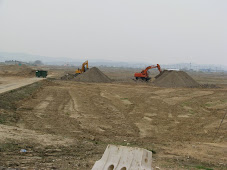


![[Collection of Documents] No Base Learning and Solidarity Program_Korea(June 14 to 20, 2010)](http://1.bp.blogspot.com/_gnM5QlRx-4c/TCTvVuN8NeI/AAAAAAAAEek/8vBJVaHdk10/S227/No-Base-banner.jpg)
![Site Fwd:[John Hines] A U.S. Debate coach’s research trip on the Issues of Korea](http://3.bp.blogspot.com/_gnM5QlRx-4c/TINCO36mzzI/AAAAAAAAE_w/Rds12NcBOXM/S227/Jeju-Peace-Tour.jpg)


![[News Update] Struggle Against the Jeju Naval Base since Jan. 18, 2010](http://1.bp.blogspot.com/_gnM5QlRx-4c/S1vvWaP25uI/AAAAAAAACkg/QvpW1tgOlKM/S226/scrum1.jpg)


![[Urgent] Please spread the Letter!: There was no Explosion! There was no Torpedo! (May 26, 2010)](http://4.bp.blogspot.com/_gnM5QlRx-4c/S_9JmsKEU7I/AAAAAAAAEP8/sAWjSPqxzUI/S227/grounded.jpg)
![Text Fwd: [Stephen Gowans]The sinking of the Cheonan: Another Gulf of Tonkin incident](http://1.bp.blogspot.com/_gnM5QlRx-4c/TAL_FtYKQ-I/AAAAAAAAERE/NEEMijiEcRM/S227/lee-myung-bak.jpg)
![[Japan Focus]Politics in Command: The "International" Investigation into the Sinking of the Cheonan](http://1.bp.blogspot.com/_gnM5QlRx-4c/TBMJ2syJzyI/AAAAAAAAEZU/uTYZccU5vyk/S227/wen_jiabao_and_lee_myungbak.png)
![[Japan Focus] Who Sank the SK Warship Cheonan? A New Stage in the US-Korean War and US-China](http://2.bp.blogspot.com/_gnM5QlRx-4c/S_iQ2vE5ZpI/AAAAAAAAEOU/Oo1SPcAe8FE/S227/buoy_map.gif)
![[Updated on 12/13/10] [Translation Project] Overseas Proofs on the Damages by the Military Bases](http://4.bp.blogspot.com/_gnM5QlRx-4c/S-qSj59gPLI/AAAAAAAAEGM/mwjlFtPE-jo/S227/missile.jpg)
![[International Petition] Close the Bases in Okinawa](http://3.bp.blogspot.com/_gnM5QlRx-4c/S8-z3DYNwNI/AAAAAAAADo4/OswTSchK09M/S227/2.jpg)

![[In Update]Blog Collection: No Korean Troops in Afghanistan](http://4.bp.blogspot.com/_gnM5QlRx-4c/SwnlLD9IewI/AAAAAAAAB9E/oUPssnpNidA/S226/No-Troops-to--Afghanistan.jpg)
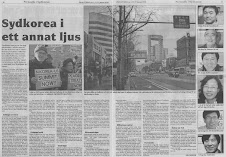

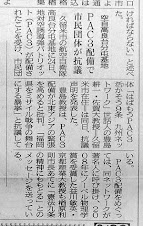








No comments:
Post a Comment